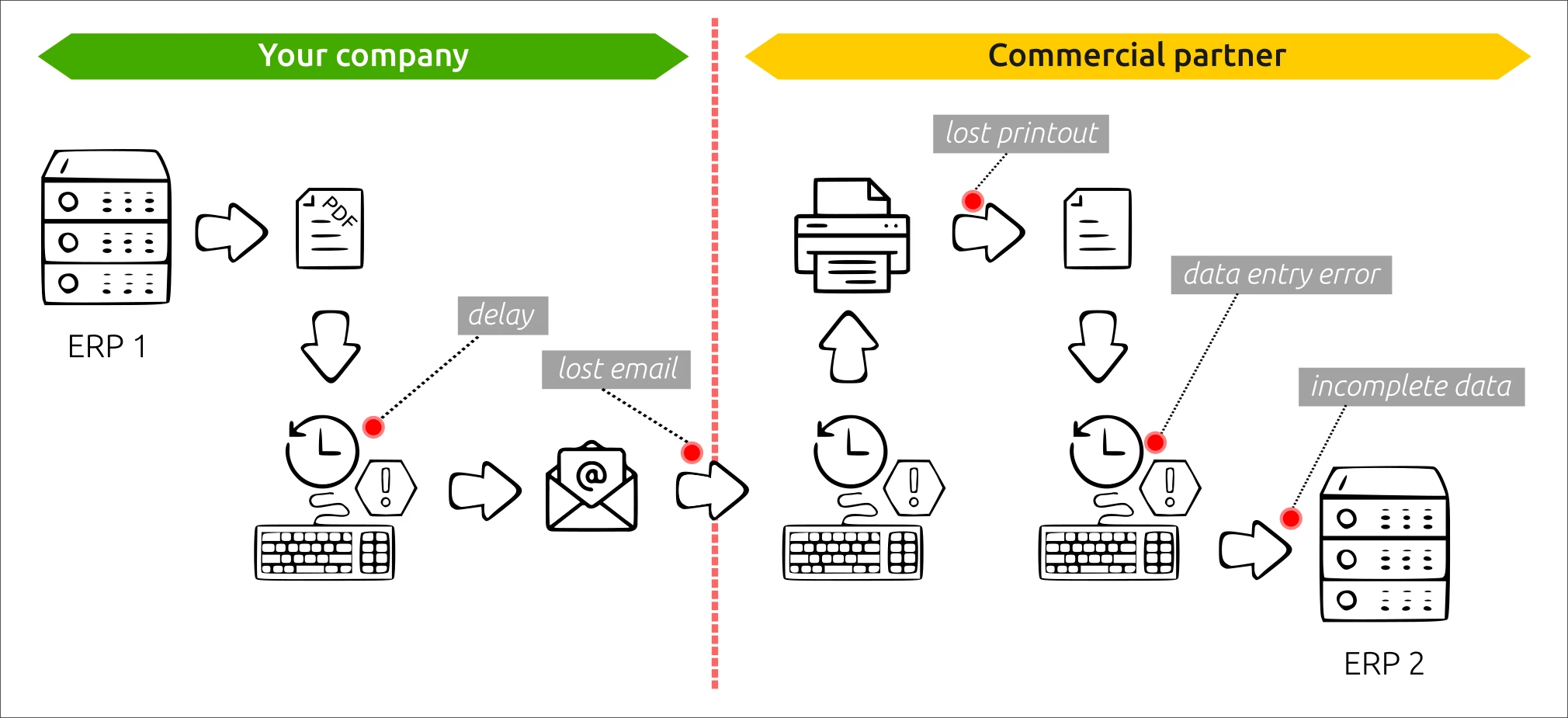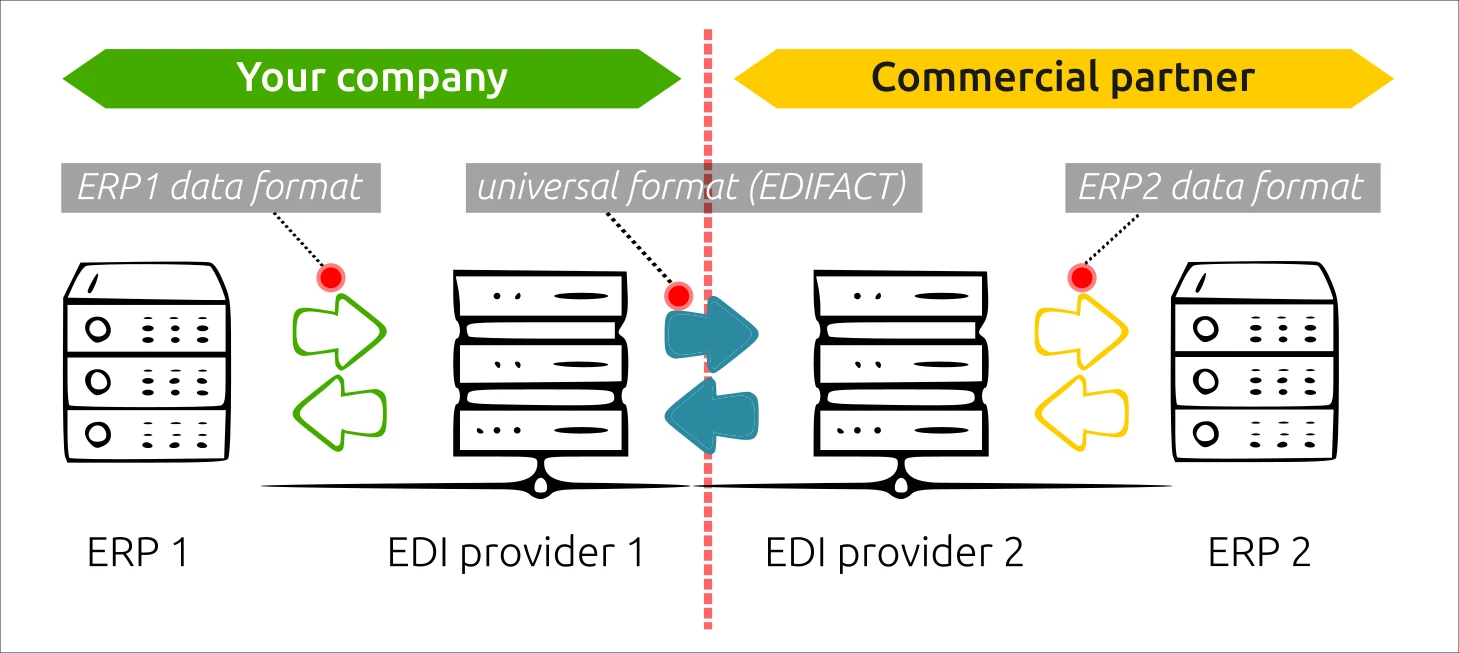EDI Essentials: the Minimum You Need to Know
What is EDI?
Electronic Data Interchange (EDI) is essentially the exchange of business data between the IT systems of two cooperating enterprises, designed to replace traditional business documents (paper or PDF files). The term EDI is commonly used to denote one of specific standards for structured data files and secure transmission methods.
Business without EDI
When electronic data exchange is not in place, collaborating companies rely on traditional documents to describe their commercial transactions. These documents go through multiple manual data processing stages during their preparation, transmission, and reception, posing a risk of errors.

Example:
- purchase orders are sent as a PDF or Excel file,
- order confirmation is made by phone or sent by e-mail,
- a paper delivery note is attached to the goods being sent,
- scanned invoice is sent as a PDF by email.
At every stage, these documents need to be prepared, uploaded, modified, formatted, printed and finally re-entered into the system. Each such manual operation carries the risk of data errors or lost documents.
What changes after implementation of EDI?
When a specific type of business document is replaced by an electronic data interchange, data is seamlessly transferred directly between the IT systems of two companies. Full EDI implementation ensures complete automation of the process.

During data transfer, a process known as “data translation” occurs, as shown on the illustration above:
- data exported from the sender company’s IT system is converted to the universal EDI format (in Europe: EDIFACT standard).
- the received EDIFACT document is then converted to a format understandable by the recipient company’s IT system.
The adoption of the universal EDIFACT format facilitates seamless integration, especially when multiple trading companies are involved, as each company uses only one data format, regardles of the number of connected partners.
Usually, businesses choose a specialized EDI service provider responsible for document translation and maintaining telecommunications links. Alternatively, companies may choose to deploy an internal EDI system with the assistance of their own IT department. In either scenario, proper supervision of the whole EDI system, whether internal or external, is essential.
Business benefits
Business data are entered into the IT system only once, at the source, and then transferred to the IT systems of trading partners.
The most obvious benefits:
- elimination of manual tasks such as sending, receiving, and entering data,
- elimination of errors caused by manual data processing, often requiring substancial time for identification and correction (involving coordination among individuals in different companies),
- elimination of paper documents from circulation, leading to cost savings associated with archiving and information retrieval.
All the aforementioned benefits contribute to a decrease in labor costs and an acceleration of operations, impacting factors like time-to-market and cash flow.
While many companies may find satisfaction in these advantages, the next strategic move involves leveraging electronic data exchange to standardize and automate business processes, ultimately fostering a competitive edge. For further insights on this topic, you can read a dedicated article: Three Levels of Benefits in Electronic Document Interchange
Related articles:
- A practical guide for managers: How to implement EDI in your company
- From Streamlined Processes to Strategic Advantage: Three Levels of Benefits in Electronic Document Interchange




